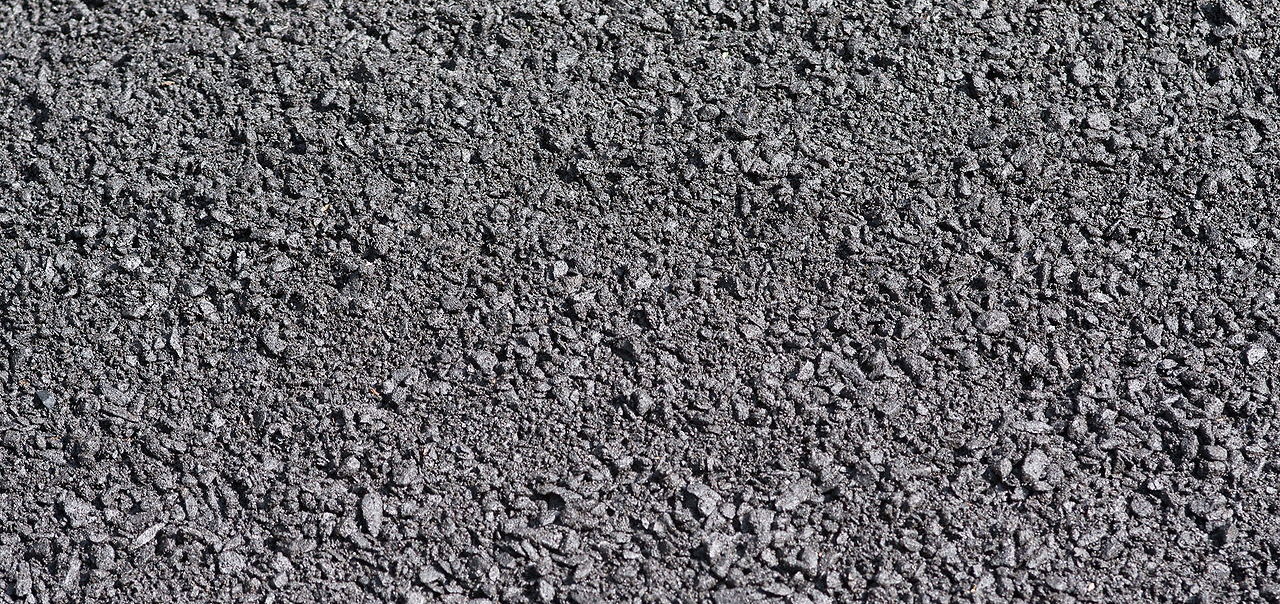
Asphalt Paving
Paving with Asphalt in Nashville, TN
You’ve got a paving project in Nashville, TN, and, more than likely, you’ll want to use asphalt. That’s probably most of what you know. But, if you’re curious about asphalt – what it is, how it works? Well, we’ve got some answers. We take some time here to explain some asphalt basics. If you have more questions, let us know! We offer services including paving, asphalt repair, seal coating, signs and striping, and many others in Nashville, TN and the Middle Tennessee area.
Asphalt & Blacktop
The word “Asphalt” can be a very confusing term for most laypeople because it is used interchangeably with several other words to mean the same or different things. Now that’s not very clear is it? Let’s see if we can clear this up a bit. For most people “asphalt” and “blacktop” are terms used to describe what engineers and the asphalt industry call; “asphalt concrete” or “bituminous concrete”. Hopefully the following definitions and explanations will shed some light on the subject.
Asphalt, also known as bitumen, is a sticky, black and highly viscous liquid or semi-solid form of petroleum. It may be found in natural deposits or may be a refined product; it is a substance classed as a pitch. Until the 20th century, the term asphaltum was also used.
The primary use of asphalt/bitumen is in road construction, where it is used as the glue or binder mixed with aggregate particles to create asphalt concrete. Its other main uses are for bituminous waterproofing products, including production of roofing felt and for sealing flat roofs.
Asphalt is a mixture of aggregates, binder and filler, used for constructing and maintaining all kind of roads, parking areas but also play- and sport areas. Aggregates used for asphalt mixtures could be crushed rock, sand, gravel or slags. In order to bind the aggregates into a cohesive mixture a binder is used. Most commonly, asphalt/bitumen is used as a binder. An average asphalt pavement consists of the road structure above the foundation/subgrade level and may include both unbound and bituminous-bound materials. This gives the pavement the ability to distribute the loads of the traffic before they reach the subgrade level.
Asphalt is the sustainable material for building pavements. It’s smooth, so vehicles consume less fuel and produce lower emissions; it’s quiet, so expensive noise walls don’t need to be constructed; it’s safe, providing excellent gripping power; and it’s durable, so that the road never needs to be removed and replaced. It is also the most recycled material in the U.S.
How is Asphalt Used?
The first thing that comes to mind when you hear asphalt is roads. But the versatility of asphalt makes it the ideal material for other applications and locations: from driveways to runways, from the barn floor to the ocean floor.
HMA is also used worldwide as a practical solution to water storage, flood control, erosion, and conservation problems. Asphalt has been approved by the Environmental Protection Agency and used successfully as a primary liner for both sanitary and hazardous waste landfills.
You’ll find asphalt all around you in a variety of uses, including:
- Transportation – highways, railbeds for transit systems, airport runways
- Recreational – running tracks, greenway trails, playgrounds, bicycle and golf cart paths, racetracks, basketball and tennis courts
- Aquatic – fish hatcheries, reservoir liners, industrial retention ponds, sea walls, dikes and groins to control beach erosion
- Residential – driveways, subdivision roads
- Agricultural – cattle feed lots, poultry house floors, barn floors, greenhouse floors
- Industrial – work sites, log yards, ports, freight yards, landfill caps
Ready to get started with asphalt in Nashville, TN?
Of course you are! Asphalt is quick, economical, flexible, and has a long life. Now you know a little more about this versatile substance and how it can be used to your benefit. Get in touch with us and we’ll help you get started with asphalt paving in Nashville, TN! Asphalt is the most used and cost effective choice for your parking lot and roadway surfaces. Lone Star Paving also provides expert striping and signs using only premium traffic paints.
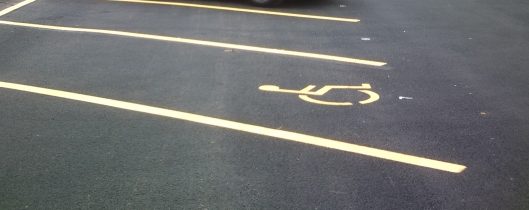
Pavement Striping and Signs
Lone Star Paving Provides Striping and Signs in Nashville, TN
From repainting dull faded lines to laying out new parking stalls, Lone Star Paving provides expert striping and signs in Nashville, TN and the Middle Tennessee area, using only premium traffic paints.
New parking line striping, signs and pavement markings can be an economical way to give your parking lot a fresh, inviting appearance. However, the benefits extend far beyond merely improving your parking lot’s looks. A well-striped parking lot with the proper pavement markings is also safer for your visitors, whether they are walking or driving, and can therefore help reduce your chances of being held liable for damages or injuries that occur on your property.
Why Parking Lot Striping, Signs And Pavement Marking Is Important
The precise pavement markings you will need depends on local ordinances, the configuration of your parking lot and the amount of traffic the lot must normally support. Typically, markings include all or most of the following:
- ADA-compliant markings, such as dedicated parking spaces that are handicapped-accessible
- Curb and/or pavement markings to indicate fire lanes
- Pedestrian crosswalks
- Arrows to indicate the direction traffic should follow, such as whether the lane must turn right or left, whether the aisle is one-way and similar information for drivers
- No-parking areas or loading zones
- Special markings, such as notices of cross traffic, stop signs or speed limits
When such pavement markings and signs are used in conjunction with well-defined parking spaces, the parking lot has a cleaner, more organized appearance. This makes navigating the lot less confusing for drivers, and since they must deal with fewer distractions, this tends to make them safer drivers.
Your parking lot makes a statement to all those who enter your property, whether they are vendors, customers or employees. A well-marked parking lot lets others know that you take pride in your property, pay attention to details and are concerned about providing others with a safe, attractive place to park. People tend to extend this perception to other aspects of your operation, such as the quality of what you offer and your personal integrity. In short, the condition of your parking lot can affect your own reputation as well as the reputation of your business. Therefore, if you can do only one thing to improve the appearance of your parking lot, line striping, signs and pavement markings should be high on your list.

What can you learn from your pavement?
Lone Star Paving for Quality Asphalt Repair in Nashville, TN
Your pavement may be sending you a message – and it is a message you need to heed! If you catch these signals early enough, you can avoid costly asphalt repair in Nashville and move forward with a clean, safe paved area. Whether it is potholes or full depth failures, Lone Star Paving provides quality asphalt repair in Nashville, TN, ensuring a smooth ride. Contact us today!
Here’s more on what to watch for:
Waves in the pavement are called corrugation, shoving or wash boarding. They show up most commonly where cars and trucks are stopping and starting. The appearance of waves indicates that the asphalt surface material is not exactly correct. The material may be defective due to excessive asphalt cement binder, an incorrect match between cement type and climate, and insufficient aggregate. Basically, the rock in the mix is not performing its job properly. A somewhat related and occasional companion to corrugation is flushing.
Flushing is the name given to the dynamic that produces a smooth, shiny surface in the wheel paths. If this is going to happen to your asphalt, it will usually crop up in the first few years. Flushing is a material problem frequently caused by excessive asphalt binder in the mix, similar to corrugation. Flushing is very difficult to correct without removing the defective material and replacing.
Ruts in the wheel paths look like waves in the pavement running in the direction of the traffic. This condition is conveniently referred to as rutting. The presence of rutting tells you the pavement design/installation was insufficient to withstand the actual traffic loads. Rutting is a structural failure. Rutting can pose a serious driving hazard due to its sudden affects on the car’s direction. It will also force water to collect in the low points creating a possibility of hydroplaning.
The presence of water or mud pumping to the surface usually indicates a pothole is on its way. The water and mud are coming from below the paving surface. They are carrying away the structural foundation to the asphalt pavement. Once the structural base has been sufficiently weakened, the pavement surface will collapse and you will be left with a pothole. All three conditions indicate that you have a water problem. Water is penetrating the surface somehow and eroding the structural support of the pavement. Until the conditions which are allowing the water penetration are resolved, the pothole will keep returning.
Numerous small cracks are called alligator cracks and tell you that either: one of the asphalt layers is too thin, the compaction is inadequate, or water penetration has deteriorated the pavement’s structural strength. Excessive bending of the surface creates the cracks. Hardening of the pavement accelerates the cracking.
When your pavement surface wrinkles or tears, it is telling you that the bond between the base and the surface has failed. The two must stay “glued” together to perform properly. The bond may fail for several reasons, but if your parking lot has a weak bond the symptoms will usually show up within the first year of operation. Typically, bond failures result from an installation error, but can be due to a major structural flaw.
Asphalt Solutions – Parking Lot Repair
Cut and Patch
The following techniques applies for the majority of the problems described in this section, including potholes. The only difference for potholes is that instead of cutting the edges, you need them cleaned up vertically to remove all loose material from the edge. If your asphalt’s problems are of sufficient magnitude and appearance is valued, you should consider having a permanent repair done to these areas. Drainage performance will be superior on a new, smooth surface.
When the areas needing repair total less than 25% of the overall asphalt area, spot repair should be your approach. If the entire parking lot suffers from structural under design or significantly poor installation, then you may need to consider replacement of the base and pavement surface. If more than 25% of the pavement area requires repair, you may need to consider replacement of the pavement surface combined with spot repair of the base.
For maximum longevity, the edges of the deteriorated pavement areas should be saw cut to ensure the crack left by the patch minimizes water penetration. Once the patch perimeter has been marked and cut, all loose asphalt material and debris should be removed down to a solid base. All dust should be blown or swept out of the hole. Tack should be applied and the patch material should installed in lifts to ensure proper compaction (slightly convex to avoid ponding). A crack fill material should be applied around the edge of the patch to ensure against moisture intrusion. A roller or compaction plate should be used for compacting the edges first then proceeding with proper compaction techniques to correct density.
Overlay
Once the problem spots have been properly repaired to attain a suitable structural support for your parking lot’s vehicle traffic, a new pavement surface can, and often should be laid over the existing pavement surface. A new pavement overlay will allow the installing contractor to control the water flow over the parking lot thereby minimizing future water related pavement problems. The existing pavement surface should be swept clean and a tack coat applied to bond the new pavement surface to the old pavement surface.
If the old pavement surface contains several cracks, a crack filling project should be completed prior to the installation of the overlay. Without filling the cracks, the existing cracks will quickly be reflected from the old pavement surface into the new pavement surface. Not only would the visual appearance be less than acceptable to you, water would now have quick access to the subsurface again. Crack filling will not prevent all reflective cracking, or other cracking, but it will greatly diminish them and slow down the rate of creation.
Pavement failure is uncommon during the early years of the parking lot unless there is a structural problem. Failure generally occurs later in the life cycle of pavement (10 years plus) and normally when preventive maintenance has not been performed or heavy traffic occurs. A common contributor to pavement failure is improper design for the type of weight and traffic the parking lot area receives.
Pavement failure means that your parking lot cannot be brought back to an acceptable condition through spot repairs and an overlay. A failed parking lot usually requires the removal and replacement of both the base and the pavement surface. Sometimes the base still remains in relatively good shape and just the pavement surface needs to be removed and replaced. The less you have to remove the lower your immediate asphalt repair cost.
One guideline to remember, if the problems are serious and the base is the cause, only removing the pavement surface will not buy you much time. The base’s flaws will recreate the surface symptoms relatively quickly and within a few years you will be back to where you are right now.
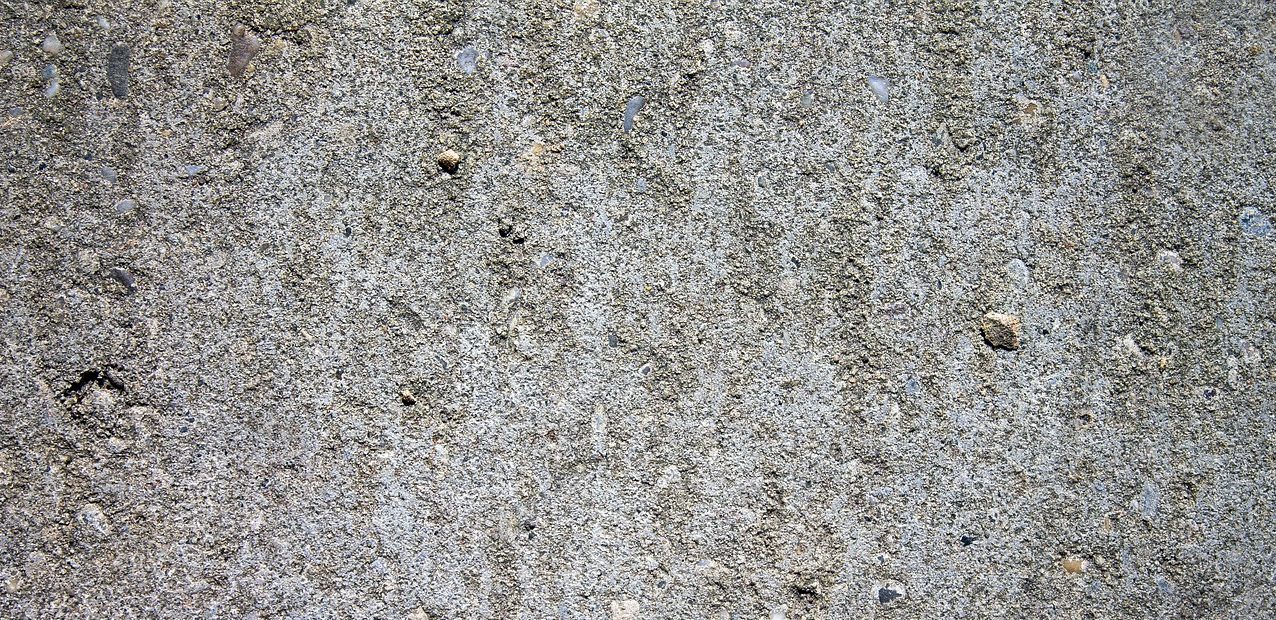
Concrete
Concrete Nashville, TN
For some projects in Nashville, TN, concrete is the best application. Here, we talk more about concrete – what it is made of, how it is used, and what you need to know when deciding if a concrete solution is right for you.
In its simplest form, concrete is a mixture of paste and aggregates. The paste, composed of portland cement and water, coats the surface of the fine and coarse aggregates. Through a chemical reaction called hydration, the paste hardens and gains strength to form the rock-like mass known as concrete.
Within this process lies the key to a remarkable trait of concrete: it’s plastic and malleable when newly mixed, strong and durable when hardened.
Concrete’s durability, strength and relatively low cost make it the backbone of buildings and infrastructure worldwide—houses, schools and hospitals as well as airports, bridges, highways and rail systems. The most-produced material on Earth will only be more in demand as, for example, developing nations become increasingly urban, extreme weather events necessitate more durable building materials and the price of other infrastructure materials continues to rise.
Even construction professionals sometimes incorrectly use the terms cement and concrete interchangeably. Cement is actually an ingredient of concrete. It is the fine powder that, when mixed with water, sand, and gravel or crushed stone (fine and coarse aggregate), forms the rock-like mass known as concrete.
The Forms of Concrete
Concrete is produced in four basic forms, each with unique applications and properties.
Ready-mixed concrete, far the most common form, accounts for nearly three-fourths of all concrete. It’s batched at local plants for delivery in the familiar trucks with revolving drums.
Precast concrete products are cast in a factory setting. These products benefit from tight quality control achievable at a production plant. Precast products range from concrete bricks and paving stones to bridge girders, structural components, and wall panels. Concrete masonry another type of manufactured concrete, may be best known for its conventional 8-by-8-by-16-inch block. Today’s masonry units can be molded into a wealth of shapes, configurations, colors, and textures to serve an infinite spectrum of building applications and architectural needs.
Cement-based materials represent products that defy the label of “concrete,” yet share many of its qualities. Conventional materials in this category include mortar, grout, and terrazzo. soil-cement and roller-compacted concrete —”cousins” of concrete—are used for pavements and dams. Other products in this category include flowable fill and cement-treated bases.
A new generation of advanced products incorporates fibers and special aggregate to create roofing tiles, shake shingles, lap siding, and countertops.
Paving with Concrete in Nashville, TN
Concrete pavements have been a mainstay of America’s infrastructure for more than 50 years. The country’s first concrete street, built in Bellefontaine, Ohio, in 1891, is still in service today. Moreover, these long-lasting concrete pavements are not confined to one region of North America, nor to a specific type of environment or climate. Concrete can handle the freezing winters of the Upper Peninsula of Michigan to the scorching heat of the Southwest.
While concrete pavements are best known as the riding surface for interstate highways, concrete is a durable, economical and sustainable solution for state highways, rural roadways, residential and city streets, intersections, airstrips, intermodal facilities, military bases, parking lot construction, and more.
Regardless of the type of roadway or current pavement conditions, there is a concrete solution. Concrete can be used for new construction, new pavements, reconstruction, resurfacing, restoration, or rehabilitation.
Benefits of Concrete
- Long life – Concrete pavements have an average service life of 30 to 50 years.
- Low maintenance requirements and costs – No need for repeated resurfacing, frequent spot repairs or patching with concrete.
- Smoother traffic flow – The construction of concrete pavements does not require lengthy lane closures.
- Quick reopening – Roads can be reopened in as short as six hours.
- Low life-cycle cost – Consumes minimal materials, energy, and other resources for construction, maintenance, and rehabilitation activities throughout its service life.
- Safety – Less susceptible to the formation of heavy-vehicle wheel ruts; easier to see at night; ensures shorter vehicle stopping distances in wet weather; due to longevity, there are fewer work zones over the life of the pavement.
New Construction & Concrete Repair in Nashville, TN
Lone Star Paving is equipped to perform repairs for concrete slabs, sidewalks, and curbs, as well as new construction. Lone Star provides tailored job management to meet your specific asphalt and concrete needs in Nashville, TN, Middle Tennessee and the Southeast United States.

Asphalt Maintenance
WHY MAINTAIN YOUR ASPHALT
Asphalt pavement is basically sand, gravel and glue. The glue that is used to keep the sand and gravel together is asphalt, a heavy by-product of oil refining. While sand and gravel do not deteriorate significantly, the asphalt binder does quite rapidly due to oxidation, solar radiation, pollution and chemicals spilled from vehicles.
No pavement has been constructed that doesn’t require maintenance. Many community associations find out too late that proper maintenance could have prevented costly replacements or new construction.
Maintenance is the art of keeping pavements in full service, with minimum expenses, and the least inconvenience to the public and/or the residence. Improper asphalt maintenance is usually worse than none at all. Preventive maintenance is a wise investment.
There Are Several Basic Forms of Asphalt Maintenance
REJUVENATOR
Applying Rejuvenator to your asphalt will protect your asphalt against oxidation and spills, replenish the lost oils from oxidation, make your asphalt last 2-3 times longer all while making the asphalt visually attractive. This application should be applied every 4-6 years. It actually makes your asphalt “young” again. Lone Star Paving can help!
SEAL COATING
This procedure will protect your asphalt against oxidation and spills while making the asphalt visually attractive. This application should be applied every 2-5 years or more frequently if use is heavy and deterioration is apparent. Applied at proper intervals, it will prolong the life of your pavement at a fraction of the replacement cost. Lone Star Paving is fully equipped to seal coat small retail centers all the way to large shipping warehouses and office complexes. Helping to protect your asphalt from water, oxidation, and petroleum products. For seal coating in Nashville, TN, contact Lone Star Paving today!
CRACK SEALING
Cracks are caused by either a failure of the base, water damage or excessive weight on the pavement surface. Installing a hot pour mix to fill the cracks can easily repair them. The crack sealer provides a waterproof bond and is rubberized to give support while the pavement expands and contracts in changing temperatures. Cracks that go unsealed will continue to allow water into the base, causing severe damage to the pavement as the base deteriorates. A pavement crack inspection and correction should be done annually.
ASPHALT REPAIR – PATCHING
If significant deterioration has taken place, removal and replacement of certain areas may be needed. If excessive ground water or poor soil conditions have aggravated the problem, corrections should be performed to the base before applying the patch. All surfaces fail at some point due to stress and mother nature. Whether it is potholes or full depth failures, Lone Star Paving provides quality asphalt paving and asphalt repair in Nashville, TN, Middle Tennessee and the Southeast United States.
PREVENTIVE MAINTENANCE
A well planned and funded preventive maintenance program will minimize your lifetime parking lot costs in Nashville, TN. Allowing minor blemishes in your pavement to grow into major problems will both increase your costs and lower customer satisfaction. No customer likes to hit potholes or step into a puddle of water.
Sun, rain and wind age your parking lot. They harden the pavement, making it more brittle and likely to crack. Friction from tires rolling across the surface wears away the asphalt binder and line striping from the top of your pavement. Sunlight oxidizes the asphalt, both hardening it and drawing the oil out of the surface material, which reduces the effectiveness of the asphalt binder and allows aggregate to break away. Improperly drained water is the most harmful weather-related factor.
Once water penetrates a paved asphalt surface it begins to wreak havoc on the pavement base. Water usually penetrates a pavement surface through cracks. If a trouble spot turns into a pothole, the volume of water entering and damaging the base layer grows substantially. The longer cracks and holes are left uncorrected, the greater the damage to the base and the greater likelihood of future cracks and potholes. Naturally, the more cracks and potholes, the greater the asphalt repair cost. The earlier the signs of wear, especially cracking, show up in your parking lot’s life, the more likely your lot suffers from a serious problem that will require repair and replacement at some point in the future.
Signs of parking lot – pavement wear include:
- Fading color
- Oil spots
- Rough surface texture
- Loose or missing aggregates in mix
- Cracks that are several feet apart and give the appearance of large rectangular blocks
- Transverse cracks, running parallel to the main traffic flow
- Bird baths
- High spots and/or rutting
WHAT IS YOUR PAVEMENT TELLING YOU?
As the sun’s affect begins to accumulate, the original dark black color of your new asphalt will turn to a light black/dark gray color. Typically, your line marking will be fading out at the same rate. The loss of color tells you that significant amounts of oil have left the asphalt surface material. Oil spots are not signs of wear, per se, or indicators of future failure. Motor oil harms the performance of asphalt binder and, therefore, the strength of the surface. Oil spots indicate an unhealthy accumulation of oil, which left unchecked, will lead to more serious problems. Rough surfaces and lost aggregate (rocks) are indications of raveling. Raveling is magnified by vehicle traffic and fast moving water from rain or sprinklers.
Miscellaneous small cracks may be telling you many things about the condition of your asphalt. Usually, they are simply the result of pavement surface or base contraction and expansion. Two things to keep in mind: cracks allow water to penetrate and damage the subsurface, and the frequency and pattern of crack development will indicate whether they are the sign of a serious problem requiring repair of the base and replacement of the existing surface layer.
Solutions:
Rejuvenator
Pavement replacement is a huge expenditure. By utilizing the CPR™ Asphalt Treatment Program, the life of your pavement can be extended. Costly replacement or repetitive overlays can be eliminated while maintaining a like-new appearance of the asphalt pavement. Asphalt Rejuvenation is based on the measurable parameters of the following: Viscosity Reduced, Penetration Increased, Ductility Increased, Asphalt Content Increased, Skid Resistance increased, Durability Increased, in wet conditions the skid resistance increases and returns to normal when the pavement is dry. The CPR™ rejuvenation process restores the asphalt pavement to a near-new condition based on its original viscosity, penetration and ductility values. CPR™ waterproofs and imparts a chemical resistance to the upper layer of the asphalt. CPR™ can be applied to a variety of pavement surfaces such as hot-mix asphalt, chip-seal, micro-surfacing and slurry seal. Pavements and roadways treated with CPR™ Rejuvenator can be opened up for traffic after a short period of time without fear of delamination or tracking. All of this with minimal downtime and a 2 year warranty.
Seal Coating
To maintain its visible impact and protect against the other effects of weather, you should have a protective surface coating applied to your pavement every few years in accordance with weather, and traffic conditions. Many different types of seal coats are available in Nashville, TN. Each one works well for some applications and less well for others. Using the lowest priced sealcoat is not necessarily the best investment for your asphalt or your long term budget. Sealcoats do not stop cracks. They do not add strength to an asphalt pavement surface. They do reduce the impacts of sunlight on the parking lot. They help the pavement hold onto its oils and aggregate. Cracks need to be cleaned out and filled prior to applying a sealcoat. The parking lot should be swept clean of any dirt. Oil spots should be heated and/or treated prior to sealcoating. Saturated oil spots should be removed down to solid asphalt and filled with an asphalt mix or permanent repair product.
Crack Sealing
The primary reason for sealing cracks is to prevent water from entering the subsurface and causing damage. A second situation, which calls for crack filling, is when preparing the surface for the placement of a fabric or an overlay. Cracks can be filled and sealed with two different techniques. The best approach is to use an injection nozzle that leaves the sealing fluid slightly below the top of the pavement. The more economical approach, and most common, is to spread the crack sealer with a spray nozzle/squeegee that leaves a three inch wide band centered over the crack. The principle advantage of the injection nozzle is that tires do not come into contact with the sealer and, therefore, will not be able to pull it up, which can happen with the banded approach. The injection nozzle also increases the probability that the sealer/filler penetrates the crack well to better withstand the shearing forces and will likely form a crack in itself over time. In order for either method to work well, small cracks must be routed out to at least 1/2″. The sealer used should have an adhesive quality to it so that it will provide a superior water barrier. The crack should be cleaned out with compressed air. Crack filling should not be performed during wet weather. Cracks less than 1/8″ can be properly covered with a sealcoat.
As a property manager or owner, here is something you need to remember – asphalt wears out. This is a given. It loses its color, it cracks, it hardens and it has occasional potholes. Asphalt is an asset that requires consistent maintenance to ensure reliable service.
Maintaining an attractive and smooth asphalt parking lot requires investment in asphalt preventative maintenance and repair. The speed at which your pavement wears out will be a function of vehicle traffic volume, quality of design, quality of installation, weather, and, last but not least, quality and timeliness of asphalt maintenance. Combining any one of the first four elements with poor asphalt maintenance is a recipe for pavement failure.
Your asphalt parking lot will eventually show signs of deterioration from one or more of the following conditions:
- Pavement wear
- Pavement distress
- Pavement failure
Allowing pavement wear to continue unchecked will lead to distress. Ignoring distress greatly increases the likelihood of failure of the pavement. Timely response to your parking lot’s warning signs is the most cost effective approach. It also signals that your company is interested in its clientele’s well being and that it pays attention to even the small details of superior customer service.
ASPHALT REPAIR NASHVILLE, TN
Your customers and employees expect a smooth driving pavement surface. Therefore, pavement distress must be addressed quickly. Pavement distress in parking lots is common after several years of moderate to heavy use. Pavement distress comes in many different disguises, but ultimately results in pavement surfaces that no longer drain properly, have potholes or have a rough texture in places.
The principle difference between pavement distress and pavement failure is the frequency of the problem. Relatively isolated problems can be resolved by spot repair. Non-structural problems can usually be patched and overlaid without digging out the existing asphalt. If your asphalt needs a new surface and the water drainage cannot be properly worked out, then removal of the existing pavement surface will be required prior to putting down a new pavement surface.
Once pavement becomes distressed, it should be repaired. If these areas are not repaired, it will lead to more serious pavement failure and damage to cars and drivers. Potholes and rutting are two types of pavement distress signals.
Failed pavement requires removal and replacement. If pavement problems were caused by poor design, improper installation, or material deficiencies, distress symptoms will keep returning and it is likely that more extensive repairs will be needed to correct the problems permanently.
Signs of Pavement Distress:
- Waves in the pavement surface
- Ruts in the wheel paths
- Water or mud pumping to surface
- Potholes
- Alligator cracking in isolated areas
- Wrinkling or tearing of the surface layer.
If you need paving, seal coating, asphalt repair or new construction in Nashville TN, contact Lone Star Paving today! Lone Star Paving can help keep your pavement smooth. We offer services including paving, asphalt repair, seal coating, striping, signs and many others. Proper property maintenance is vital to maintaining your building’s tenants and property value. Your building’s first impression starts in the parking lot.
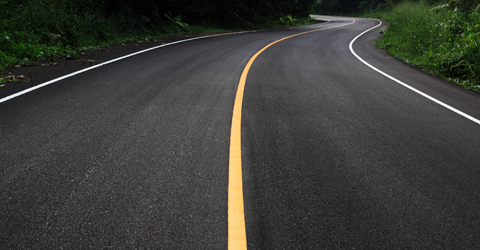
Seal Coating
Asphalt Paving
Asphalt pavement, to keep in simple terms, is primarily rock and/or stone and gravel, along with a binder. The rock, or aggregate, is held together with this binder also known as asphalt cement. The binder is created from the distillation process of certain crude oils. Maintaining this binder is essential in prolonging the deterioration of asphalt surfaces. Rain, U.V. rays, and chemicals, as they are introduced into the asphalt, will degrade the binder and thus begin the degradation process of the asphalt. This will continue and create a surface that turns brittle. To reduce the effects of these elements, it is important to implement a maintenance program that utilizes seal coating to extend the life of your parking lot or driveway. Contact Lone Star Paving today for more information on asphalt paving and seal coating in Nashville, TN.
Seal Coating
Seal coating will provide a layer of protection blocking out the elements: water, oils, and U.V. damage. In addition, when applied to manufacturers’ specifications, seal coating provides a slip resistant surface with a deep black finish that beautifies the parking lot or driveway. Seal coats are typically bituminous based products or acrylics. The seal coat is in a liquid formulation of one of the above emulsions, mixed with water, silica sand, polymer additives, and other proprietary fillers and solids. These products can be applied by brush, spray or squeegee. A regularly scheduled seal coating program will more than double the life of the asphalt, saving you significant dollars down the line. Instead of having to pay thousands of dollars for new pavement, it is more cost effective to spend only pennies on the dollar per square foot to maintain.
When applying a seal coating product, follow the important steps referenced below to get the most protection and optimum performance:
- A minimum of two coats should be applied.
- Temperatures must be a minimum of 50 degrees and rising for a period of not less than 24 hours. Do not apply when temperatures are forecasted to get below the 50 degree mark.
- Do not apply if rain is imminent within the same 24 hour period.
- Once finished with the application of seal coat, allow to cure 24 hours before allowing vehicle traffic back on the surface.
To summarize, seal coating every two to three years will certainly extend the life of your asphalt pavement for minimal cost. When applied appropriately and at the right time, seal coating prevents oxidation, seal coating stops weather damage, and seal coating beautifies pavement.
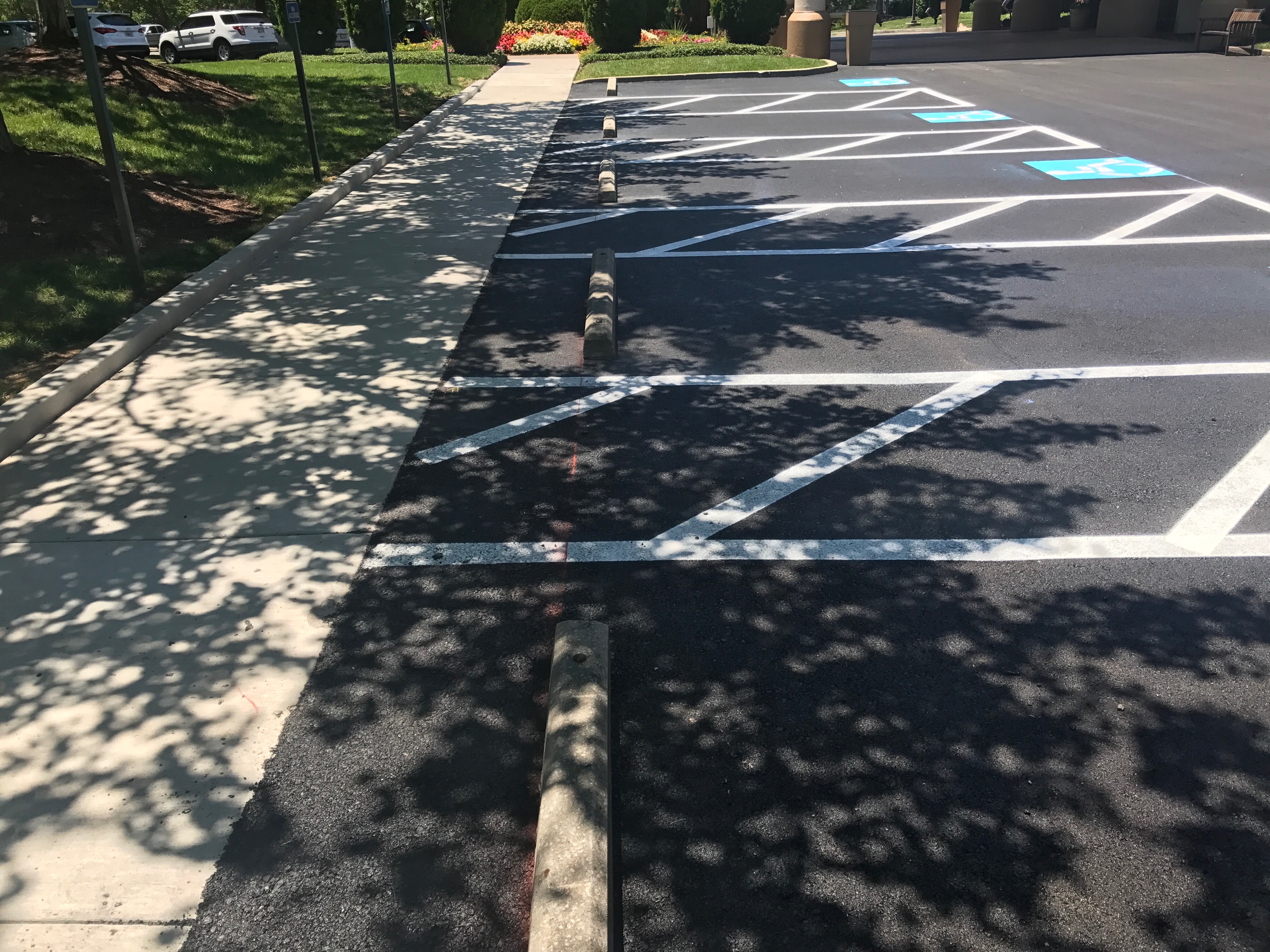
Welcome to the Site!
We have published our new website! We hope you enjoy the improvements.
